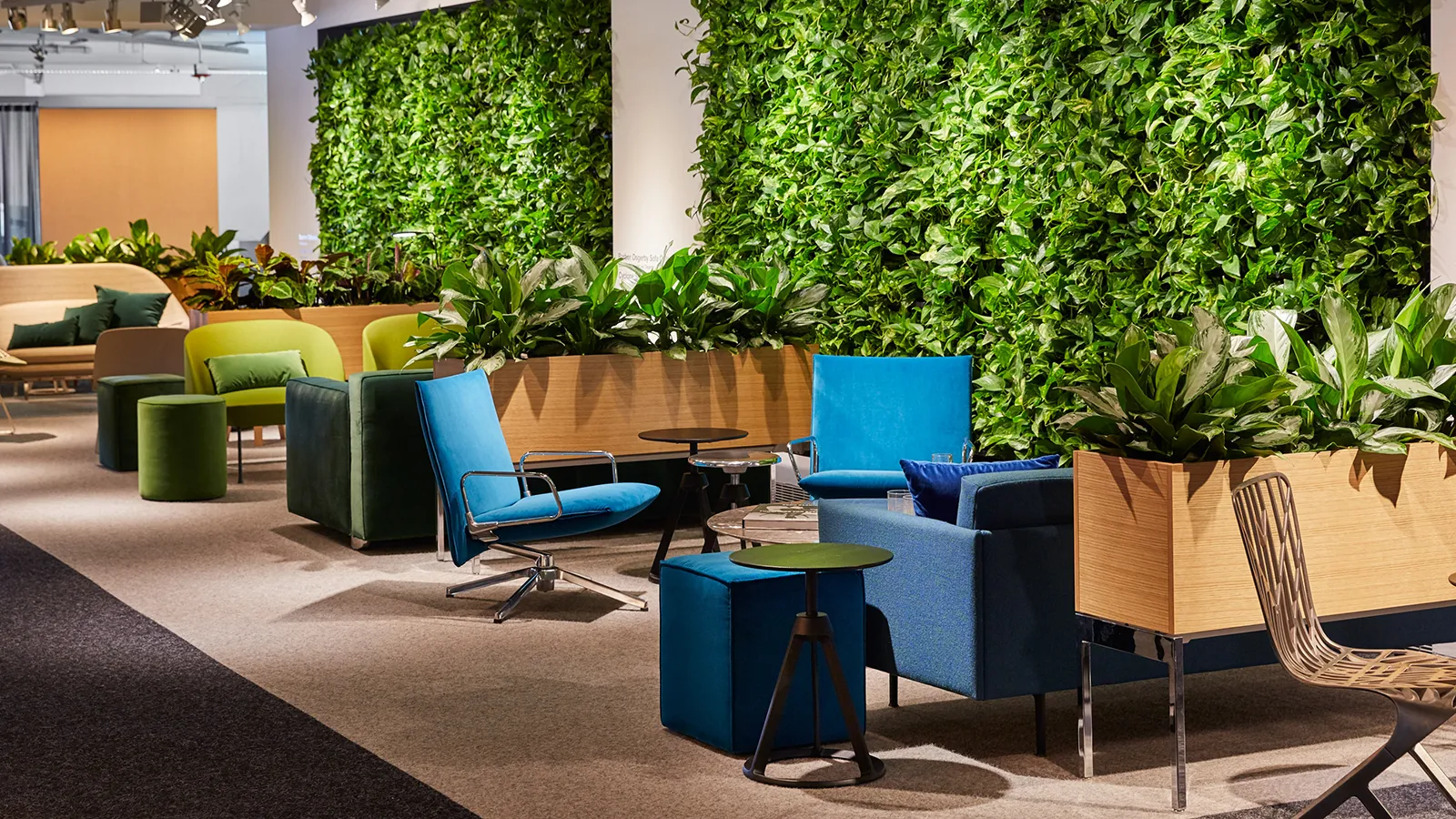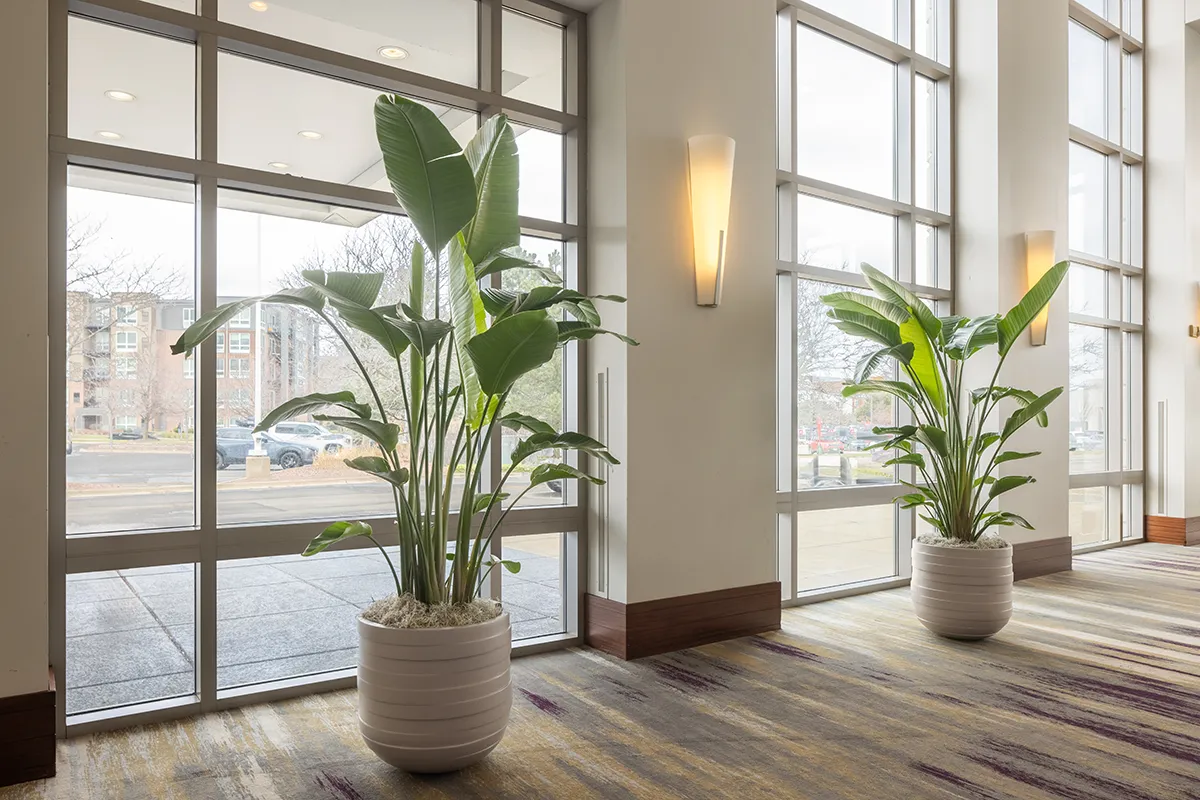Interior Landscapes for
Exceptional Spaces
We Are Your Biophilic Design Partner


We work with designers and property managers to enrich commercial spaces through nature-inspired design.
Captivating biophilic designs that add natural vibrancy and inspiration to:
- Class A office buildings
- Innovative corporate offices
- Luxury hotels and hospitality venues
- Leading healthcare facilities
- Discerning retail establishments
- Exclusive condominium buildings
Known for a best in class, in-house design team, a vast and unique selection of plants and display vessels, precision install and meticulous upkeep, Amlings has been a trusted community partner in Chicago for over 125 years.

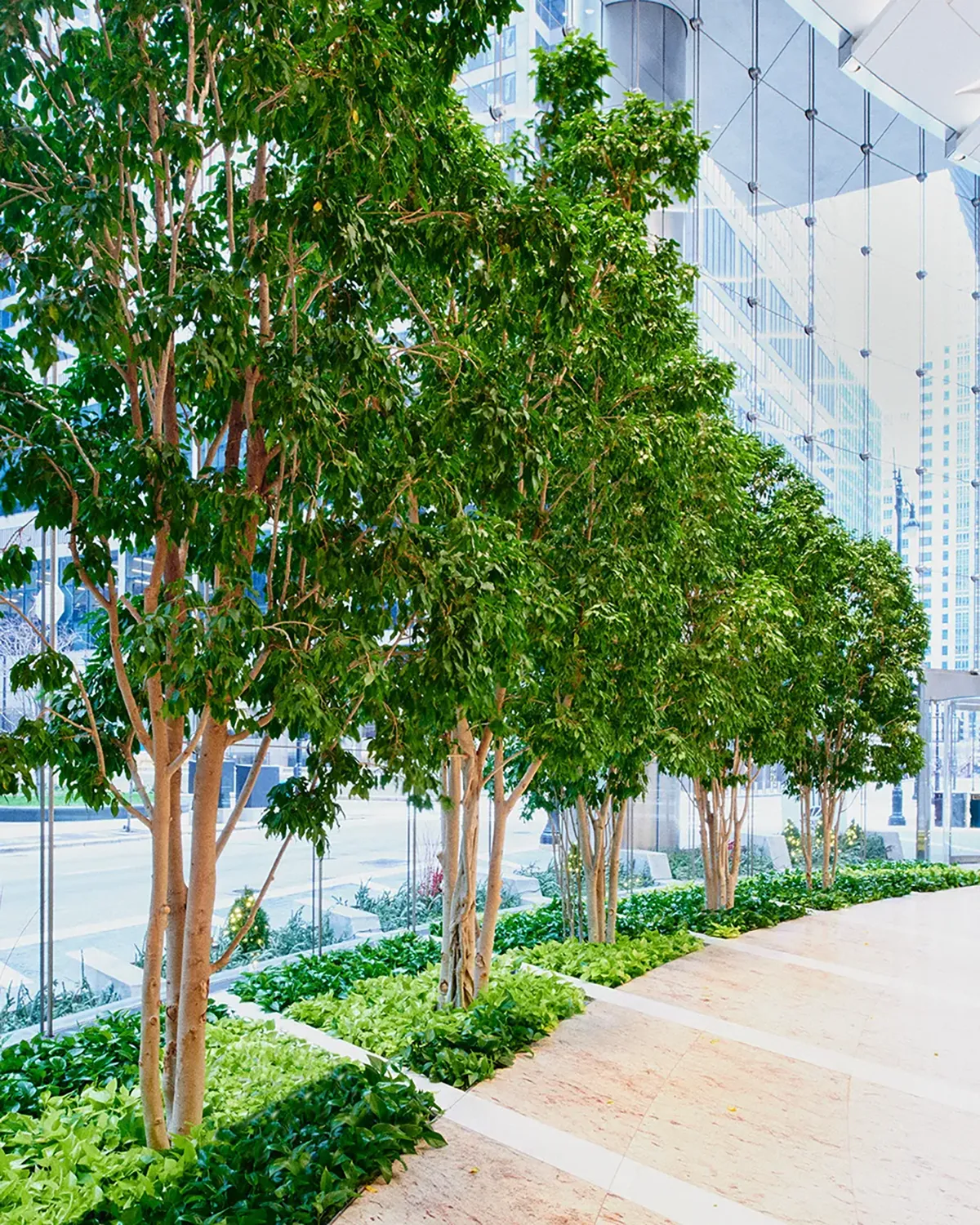
When to Choose Amlings?
Clients come to us for different reasons – but stay with us for a lifetime. We pride ourselves in long-term partnerships, working with clients as design partners for all things greenery: interior landscaping, blooming plant and fresh floral displays, urbanscaping, and holiday decor.
Building Remodels
When businesses, offices or hospitality spaces refresh their environments, we elevate the look with design-forward plant installations that feel intentional and modern.
New Projects & Additions
From ground-up builds to new additions, we collaborate with architects and designers to ensure interiors open with impact.
Leadership Changes
New hires and promotions can bring updates to a company’s brand and their spaces. We help guide companies as they refresh their spaces and embark on implementation of their new vision.
Contract Lifecycle
As plant service contracts come up for renewal, many properties take the opportunity to upgrade their plant program—and choose Amlings for a more design-driven approach.
We are Designers First
Exceptional plant displays begin with inspired design. Unlike a traditional plant service, we’re an interior design company first.
Every plant and container we recommend complements your property’s brand, art, and audience. Our horticultural experts bring that vision to life, choosing species that thrive in the specific environmental conditions of your space.
For ongoing care, our plant displays are maintained by professional technicians at museum-level quality to protect your investment and your brand.
Rooted in Chicago, we work seamlessly with building managers and engineers to meet the rigorous standards and protocols of the most demanding properties.
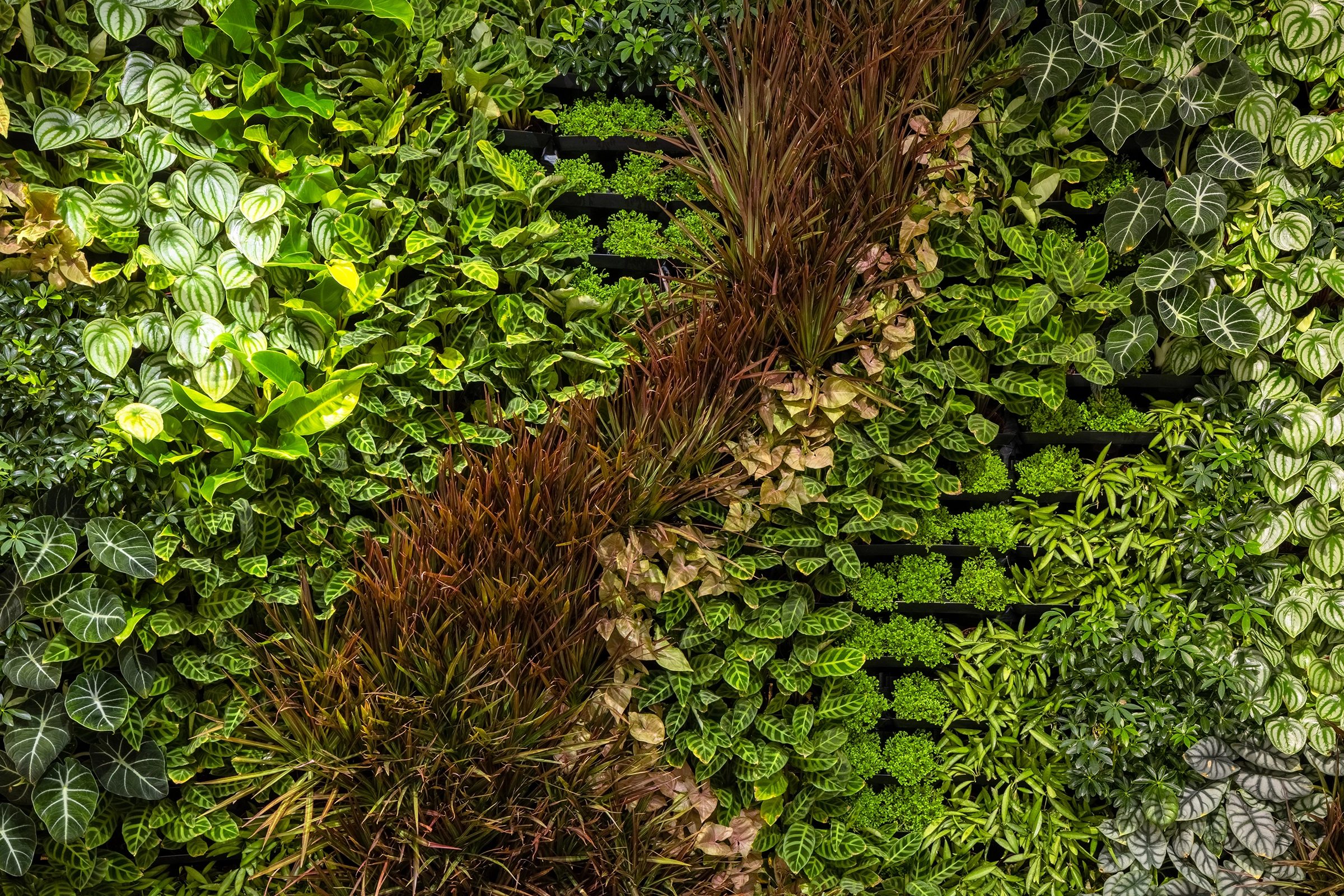

Our Services
Interior Landscape Design & Installation
We integrate plants and nature-inspired design into corporate and hospitality spaces with elegance and intention. Every project is thoughtfully tailored—considering your architecture, brand and audience—to elevate the environment and your reputation.
Sourcing only the highest-grade live plants and premium containers from trusted partners across the country, our designer-led process guarantees your space reaches its full potential. Whether through purchase or lease, Amlings delivers interior landscapes that complete your space.
Ongoing Maintenance
Our horticultural specialists provide reliable care to ensure your plants—and your property—always look flawless. With a deep understanding of plant health and performance, we anticipate issues before they surface, protecting your investment and keeping every detail pristine.
Living Plant Walls
We design and maintain striking plant walls that transform spaces into bold statements. Amlings is at the forefront of this evolving trend in Chicago, offering both design expertise and long-term care.
Exterior Displays
The right collection of outdoor planting can liven any urban exterior space—from front entry planters and rooftop gardens to sidewalk cafés and parkway installations. The right combination of color, texture, and form transforms the outdoors into a vibrant, welcoming extension of your property.
Holiday & Seasonal Installations
From five-star hotels to Class A office buildings, we design seasonal displays that captivate guests and celebrate the spirit of the season. Our festive environments create a sense of wonder and sophistication—leaving impressions long after the holidays are over.
Portfolio
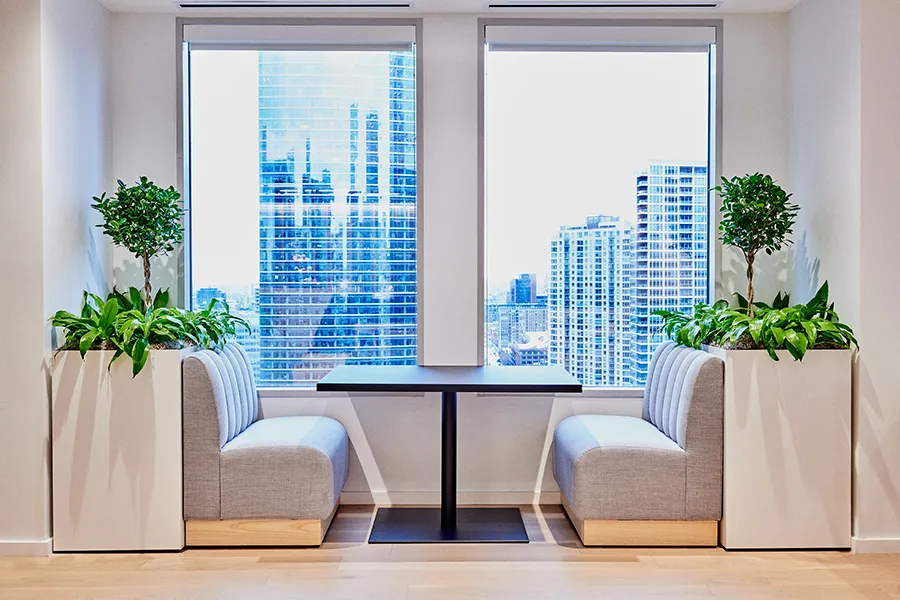
Interior Landscape Design & Installation
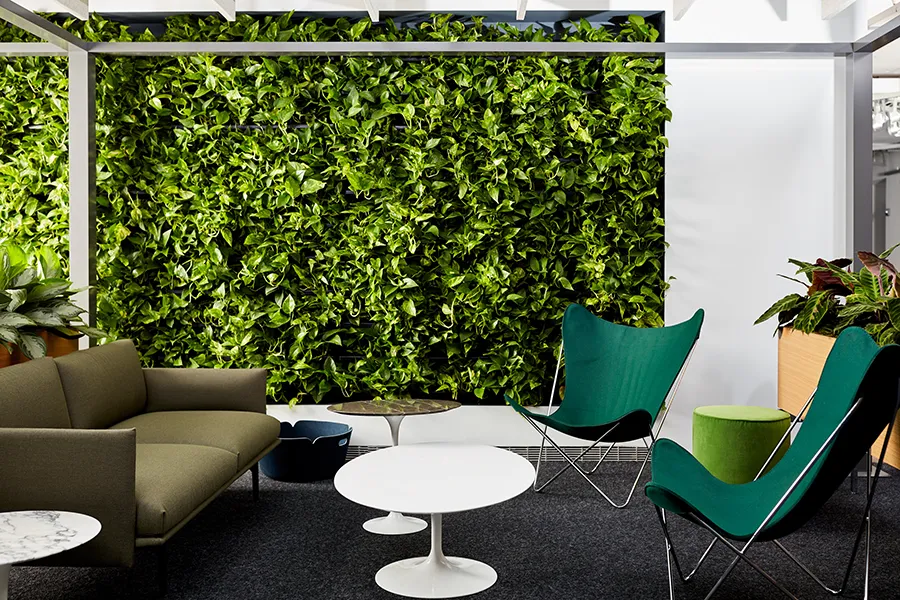
Living Plant Walls
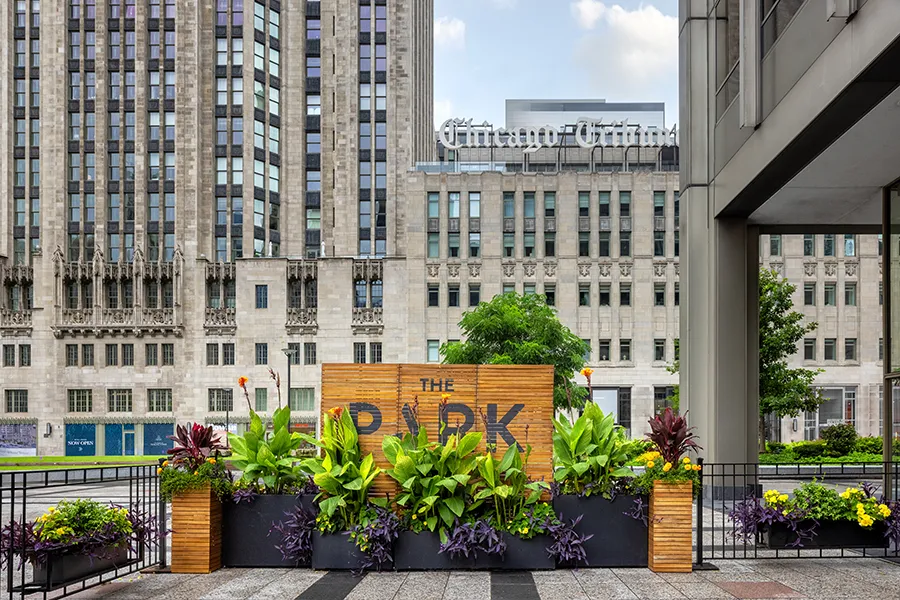
Exterior Displays
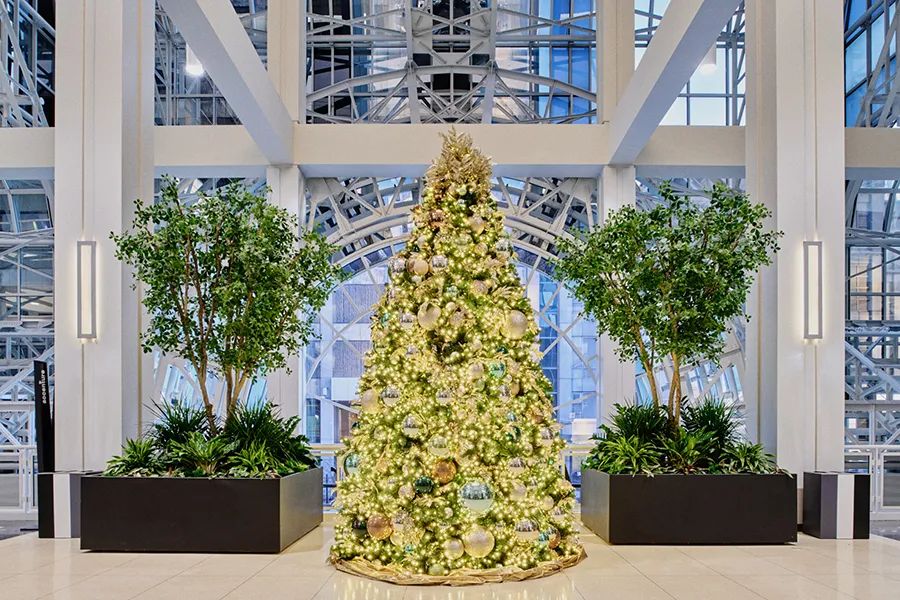
Holiday & Seasonal Installations
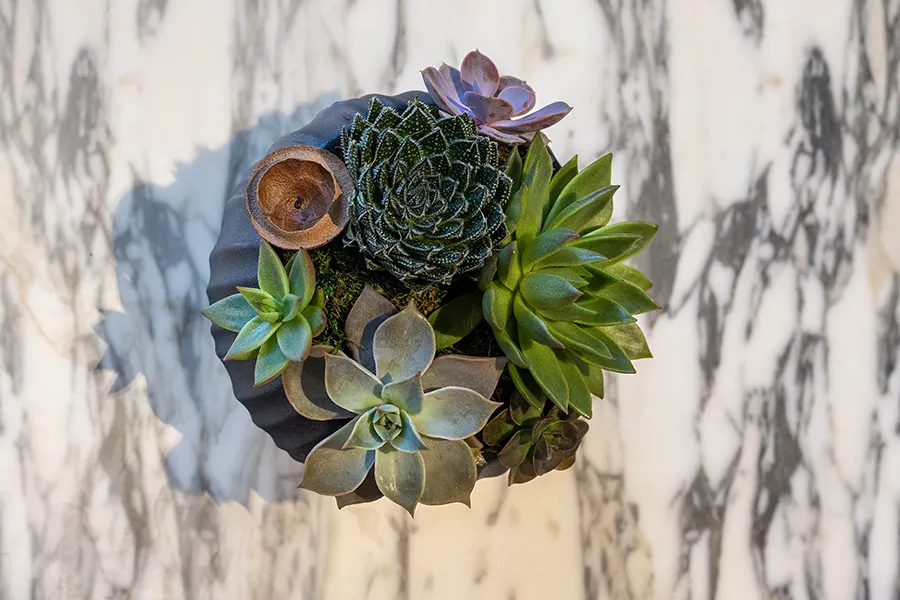
Custom Arrangements
News
Biophilic Design Benefits
Plants in an office are never just plants. They shape how people feel, focus, and interact. A carefully placed living wall softens the sharp lines of corporate interiors, while seasonal greenery transforms lobbies into places that feel alive, connected to the rhythms of the city outside. But greenery in commercial spaces isn’t only about aesthetics. Research shows that biophilic design—bringing natural elements indoors—reduces stress, improves air quality, and increases productivity. In a city like Chicago, where winters are long and gray, these benefits are more than luxuries; they’re necessities for well-being. At Amlings Interior Landscape, we design, install, and care for plants with the same attention architects give to steel or stone. Our work is about more than placement—it’s about creating an environment that evolves with the people who move through it every day. The science backs it up. Research from the International Living Future Institute and the American Society of Interior Designers shows that biophilic design—integrating natural elements into the built environment—can reduce stress by up to 15%, increase productivity by as much as 6%, and improve overall well-being. The World Green Building Council also reports that workers in spaces with natural light and plants experience 30% fewer sick days. In a city like Chicago, where daylight is scarce in winter and high-rises dominate the horizon, those benefits aren’t just aesthetic—they’re essential.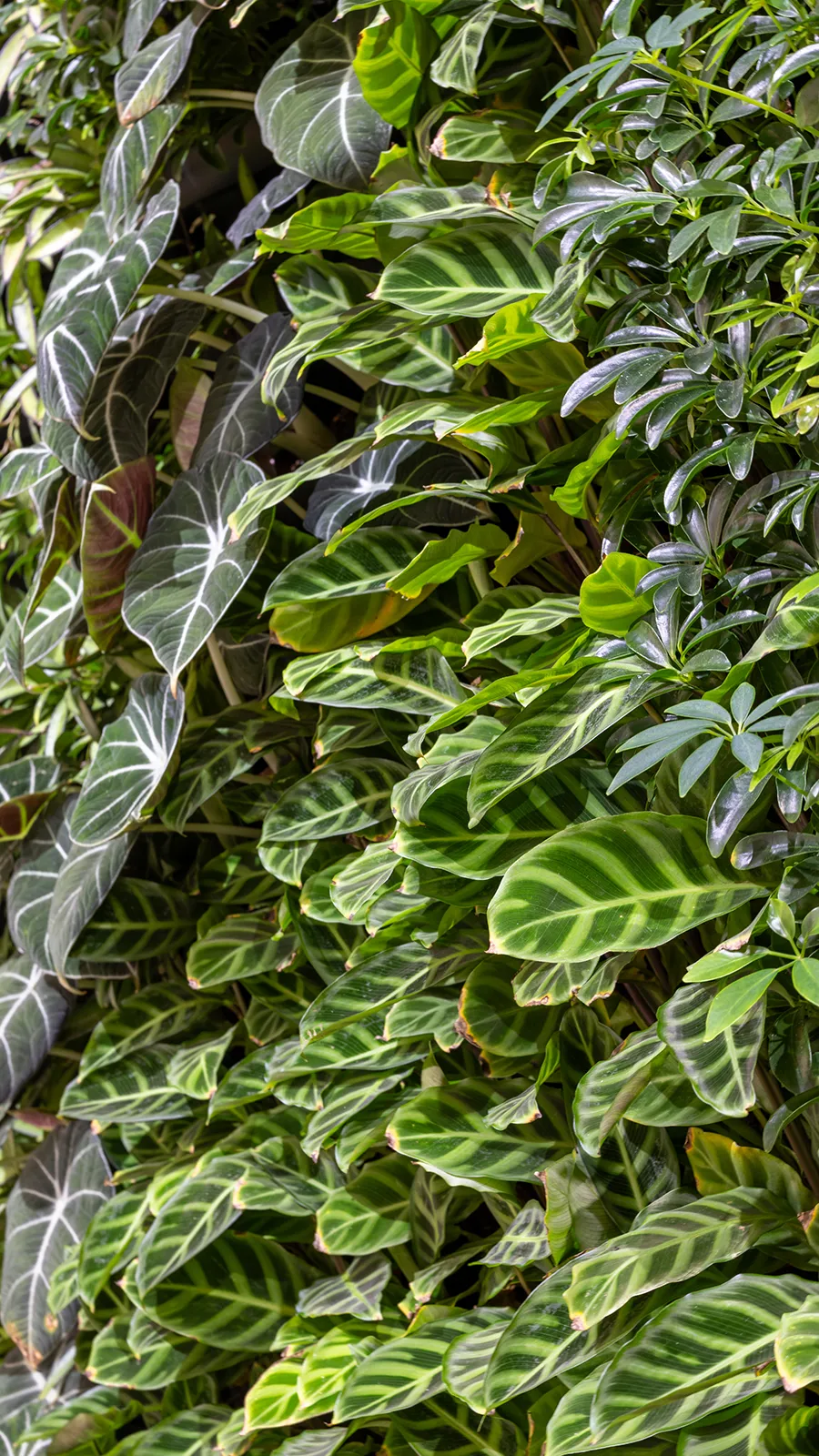
“Architecture should speak of its time and place, but yearn for timelessness.”
— Frank Gehry
A five-star lobby doesn’t need to announce itself. It feels effortless — a quiet confidence that welcomes, impresses, and restores. The secret lies not in excess but in understanding how light, proportion, and nature can come together to create balance.
At Amlings, we’ve spent more than a century shaping environments that achieve this kind of understated luxury. From Chicago’s landmark office towers to its most prestigious hotels, our design team understands that beauty and calm are not opposites — they are partners in creating atmosphere.
The world’s most memorable lobbies are not defined by marble floors or chandeliers, but by how they make people feel. Step into The Langham, the Wrigley Building, or any space elevated through thoughtful design, and there’s a rhythm at play — a visual and emotional harmony between architecture, materials, and nature. Everything is intentional, but nothing feels forced.

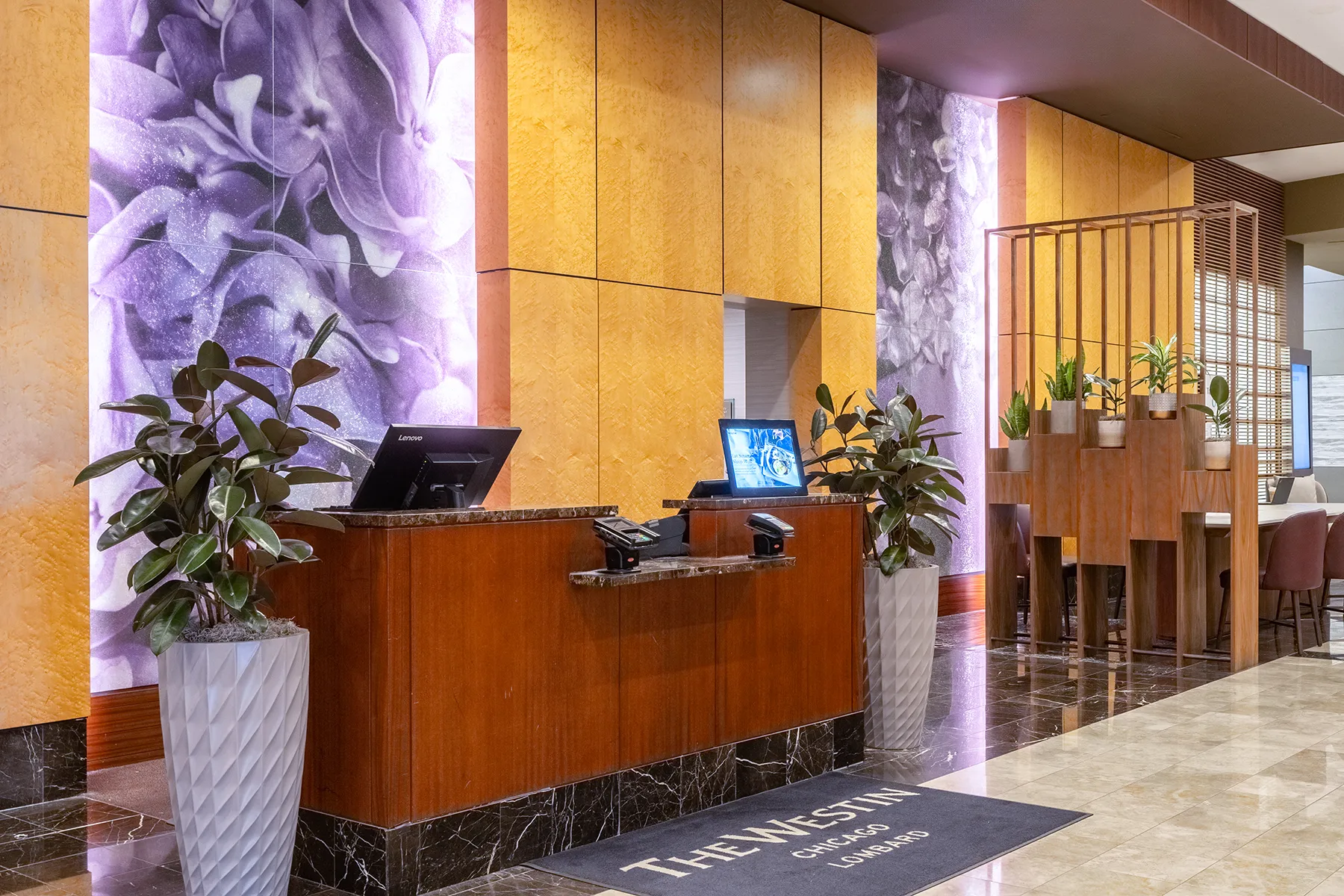
In recent years, biophilic design has become the foundation for this kind of timeless luxury. Rooted in the human instinct to connect with nature, biophilic spaces use living elements, organic materials, and natural light to enhance well-being. The International Living Future Institute notes bringing nature indoors reduces stress, boosts creativity, and promotes focus — qualities that make even the busiest lobby feel like a sanctuary.
Plants, when thoughtfully integrated, bring warmth to modern architecture. Living walls that climb against concrete, sculptural fiddle leaf figs placed like art — these details invite both energy and stillness. A lobby that incorporates greenery not only feels alive but becomes a reflection of balance and curation.
Texture is another hallmark of five-star design. Layering natural materials like stone, linen, or wood introduces depth and subtle movement. Light plays across these surfaces, revealing tones and shadows that shift throughout the day. The U.S. Green Building Council (USGBC) emphasizes this interplay between sustainability and sensory design — how the tactile and visual experience of a space can enhance environmental and emotional health simultaneously.

Color, too, shapes emotion. The Pantone Color Institute reminds us each year that color reflects culture, hues that define modern luxury are often drawn from nature. The green of olive leaves, the gold of warm sunlight, the subtle taupe of river stone all ground the design and serenity.
To make a lobby feel like a five-star hotel, every element must feel intentional. The result isn’t simply aesthetic; it’s sensory. It’s the way light filters through glass in the morning, the rhythm of footsteps softened by greenery, the stillness that lingers even in motion. Think of the atmosphere that surrounds you and influences your emotion through your five senses.
American Society of Interior Designers (ASID) emphasizes design as an “intrinsically human-centered profession” with the power to transform how people feel in a space. In a lobby, that means every element tells a story: the architecture, the lighting, the decorations. When design becomes narrative, function transforms into feeling.
Ultimately, the secret to creating a five-star atmosphere is understanding that luxury isn’t about what’s seen — it’s about what’s felt. It’s about harmony, rhythm, and restraint. It’s the quiet confidence of design that breathes, embracing imperfection and allowing people to belong.
Because true luxury is not a look. It’s an experience.
Biophilic design is a return to timeless principles that great designers have always known: spaces that thrive are those that connect structure and life. It’s not a passing trend but a rediscovery of something deeply human—the instinct to feel at home in nature. As Frank Lloyd Wright said, “Love nature, stay close to nature. It will never fail you.”
The Human Connection: Core Principles of Biophilic Design
At its essence, biophilic design is about integrating different life forms (plant and human)—creating environments where living forms work in quiet harmony with architecture. It’s about designing spaces that feel alive. Skylights that bathe interiors in sunlight. Sculptural greenery that softens the edges of modernism.
This approach is not new to Amlings—it’s the foundation of how we’ve worked for more than a century. What began as a family floral and plant business has evolved into one of Chicago’s leading interior landscape design firms, trusted by Class A office buildings, luxury hotels, and landmark properties. Our design-first philosophy ensures that every installation—whether a lobby statement piece or a lush rooftop terrace—feels intentional, elegant, and connected to its surroundings.
This philosophy mirrors the vision behind celebrated organic works like Casa Orgánica by Javier Senosiain—a structure where form and function coexist in effortless flow. Its design, like all biophilic spaces, rejects rigidity. It follows the curves of the earth, inviting light and shadow to move through it naturally. The lesson is simple: when we design in conversation with nature rather than in control of it, we create places that feel timeless, restorative, and deeply human.
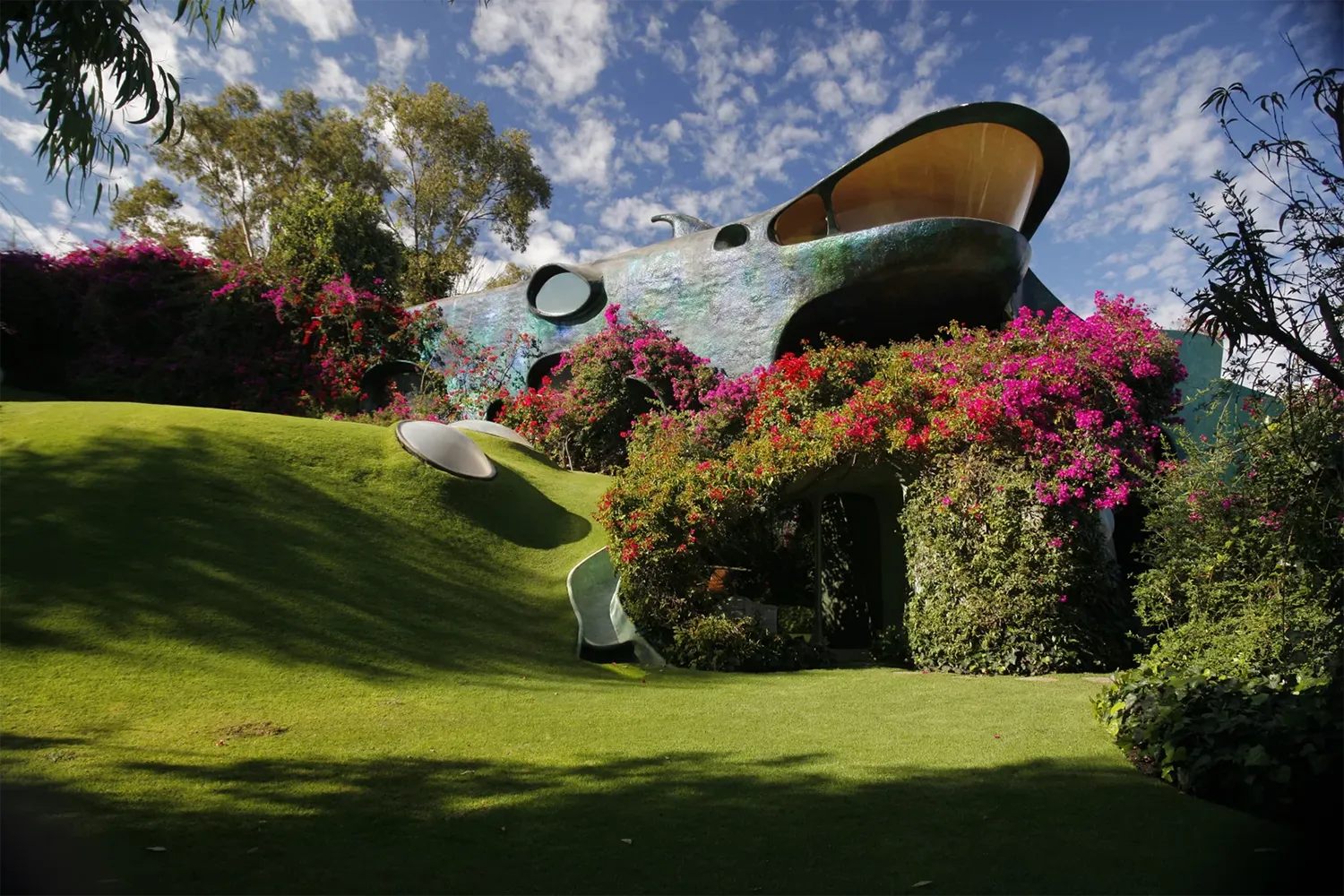
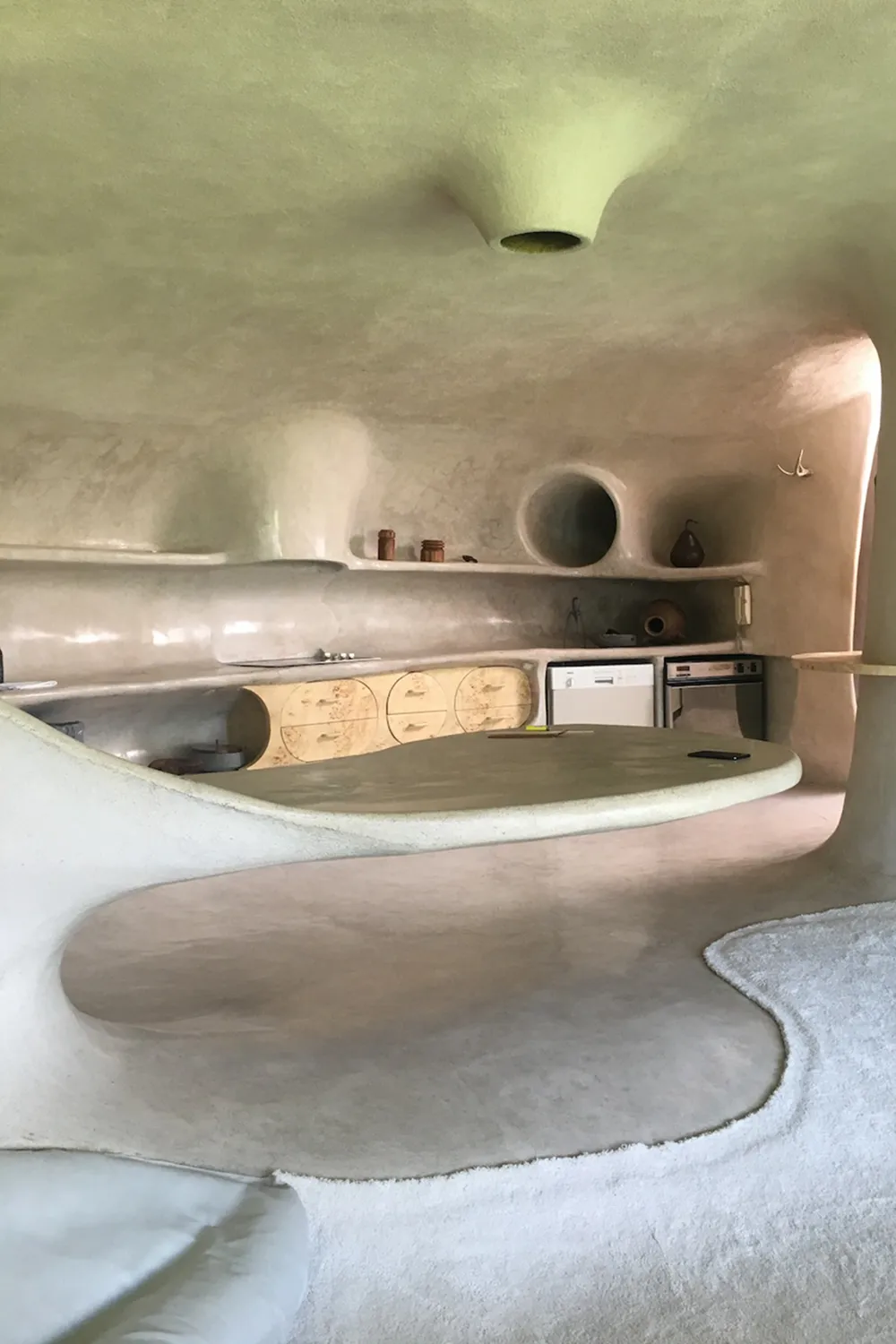

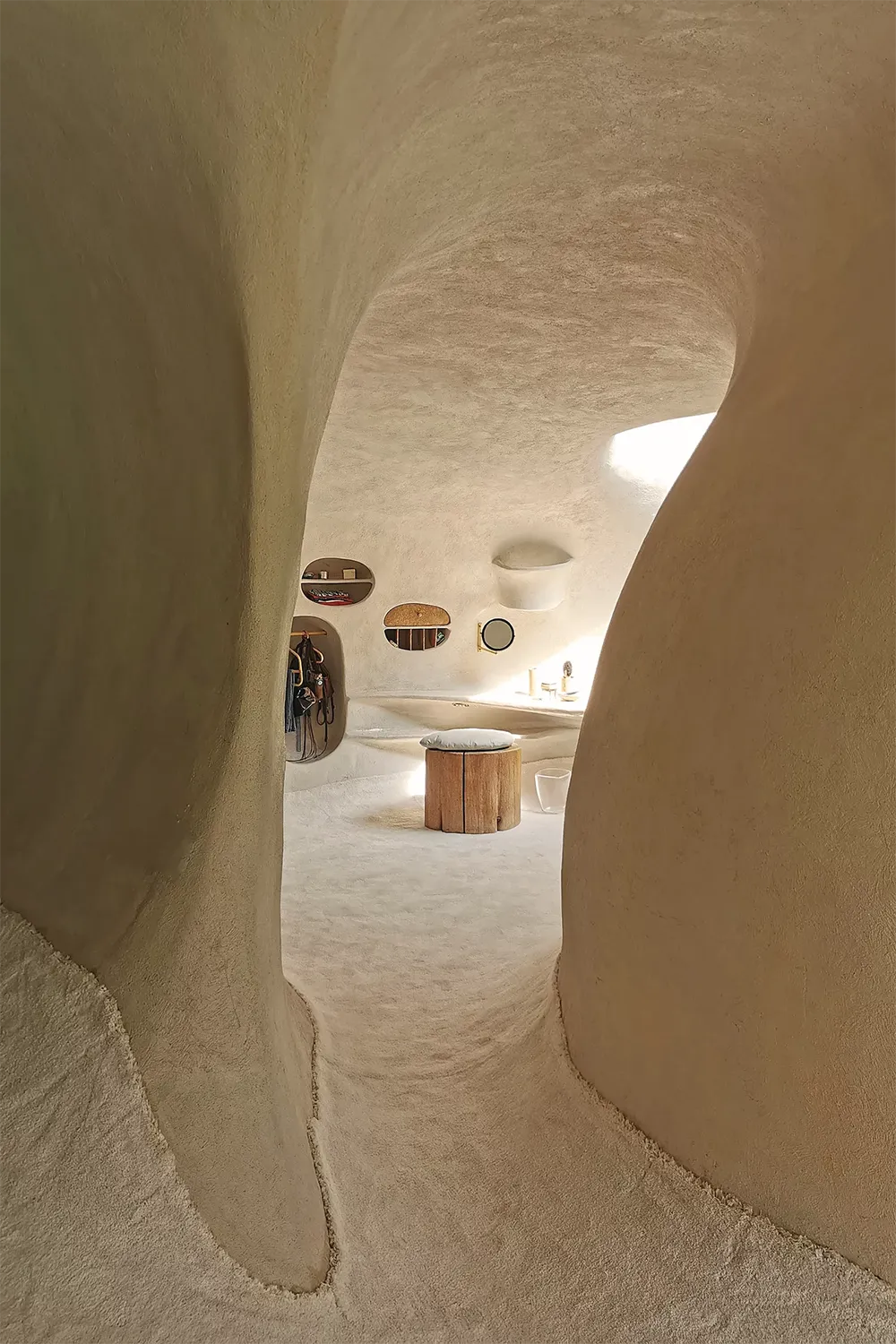
Why Biophilic Design Matters: Research and Results
Research from the International Living Future Institute and the American Society of Interior Designers has shown that spaces enriched with natural elements profoundly affect how people think, work, and feel. Employees are more engaged, guests stay longer, and visitors describe a sense of calm that lingers. For property managers, designers, and hospitality brands alike, the benefits extend beyond beauty—they shape brand perception and experience.
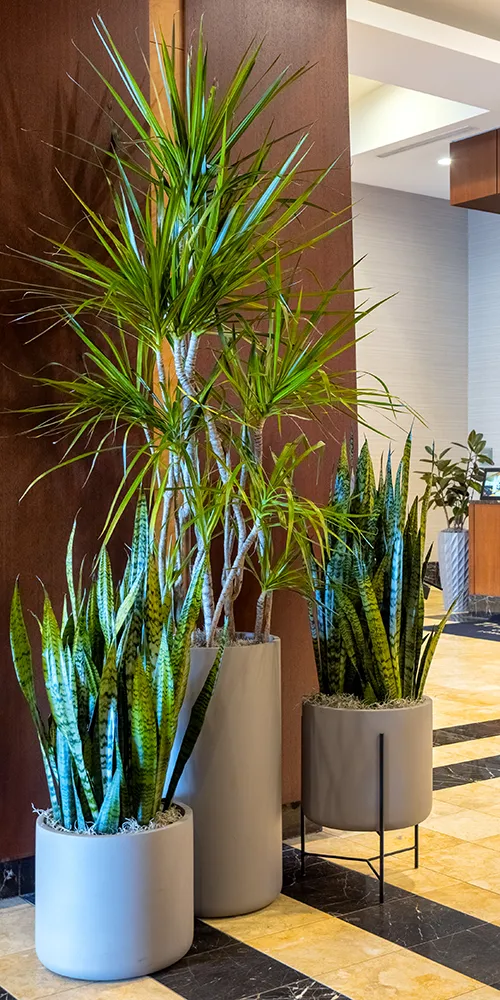
Biophilic design also carries a quiet sense of responsibility. Guided by the sustainability principles of the U.S. Green Building Council (USGBC), it encourages material choices and construction methods that work with the environment rather than against it.
Across Chicago’s most iconic spaces—John Hancock Center, Wrigley Building, Aon Center, and the grand interiors of The Langham Hotel—biophilic design has become a quiet revolution. It’s the art of building environments that breathe. Living walls that thrive against steel and glass.
For more than a century, designers and horticultural innovators have carried this philosophy forward, shaping how cities like Chicago experience nature indoors. Their commitment to craftsmanship, design integrity, and sustainability continues to redefine how we think about biophilia in the built environment.
Because when design breathes, so do we.

